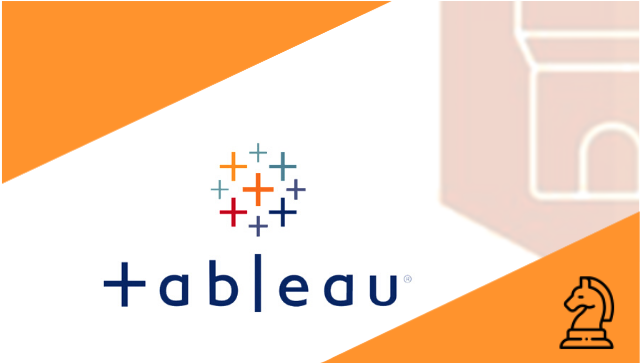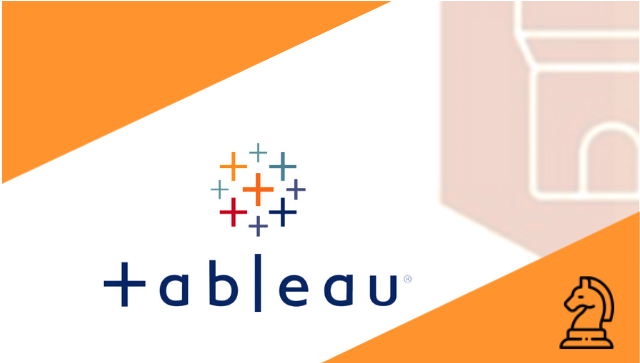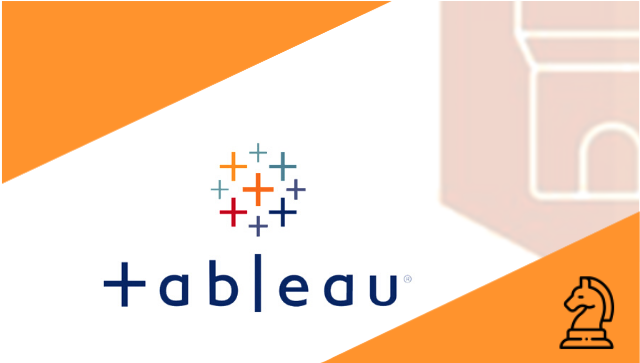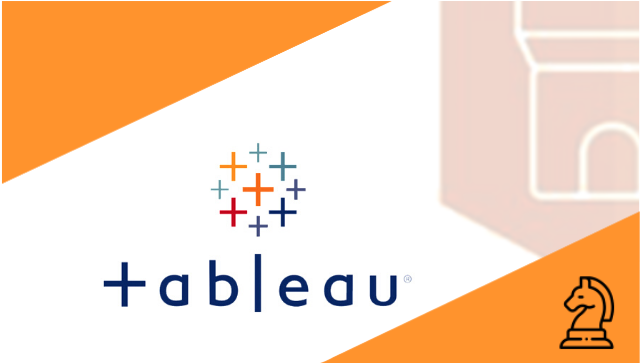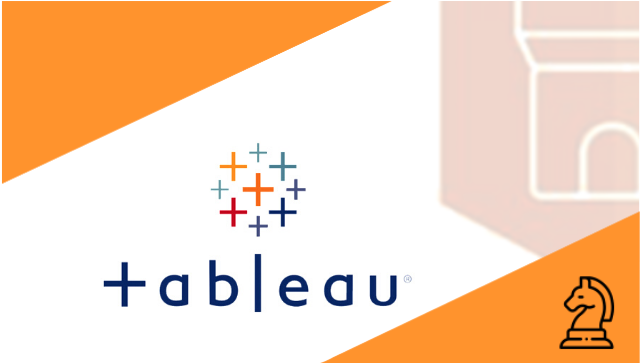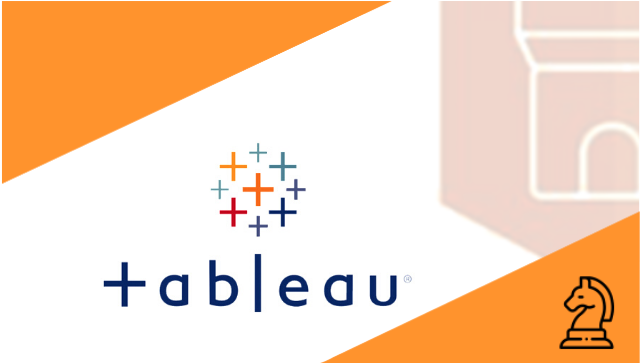
Corsi disponibili di Tableau
Course delivered in English
Lessons:108
Level:Intermediate
Access: Free Online Course (Audit)
Are you doing deep data prep and analysis? Responsible for creating content for others? If you have Tableau Prep and Tableau Desktop, these videos are for you. Learn how to prepare, analyze, and share your data.
Creator Learning Path
- "Getting Started" has 3 videos for a duration of approx 34 MIN
- Tableau Prep - 12 VIDEOS - 67 MIN
- Connecting to Data - 11 VIDEOS - 72 MIN
- Visual Analytics - 26 VIDEOS - 144 MIN
- Dashboards and Stories - 8 VIDEOS - 40 MIN
- Mapping - 12 VIDEOS - 47 MIN
- Calculations - 16 VIDEOS - 65 MIN
- Why is Tableau Doing That? - 4 VIDEOS - 22 MIN
- How To - 10 VIDEOS - 39 MIN
- Publish to Tableau Online - 3 VIDEOS - 22 MIN
- Publish to Tableau Server - 3 VIDEOS - 22 MIN
Course delivered in English
Lessons: Exam Course
Level:Intermediate
Access: Free Online Course (Audit)
Your role in data
As a Consumer, you use data to make more informed decisions for your line of business. You are responsible for:
- Viewing reports and dashboards created by others and potentially serving as primary stakeholders of these dashboards.
- Using data to make decisions in day-to day job functions,
- keeping informed colleagues and management of progress toward goals, and tracking team or company metrics.
- Staying knowledgeable in your subject areas even if you are not an expert data analyst.
This learning path includes:
- Getting Started with Tableau
Topics Covered: Tableau Basics
Learn the foundational skills you need to begin your Tableau journey.
This course covers core data literacy concepts and provides guidance for navigating Tableau Online or Server, empowering you to learn Tableau quickly and effectively.
Course delivered in English
Lessons: 1
Level: Beginners
Access: Free Online Course (Audit)
With Exploring Aggregation and Granularity you can learn how understanding aggregation and granularity can help you see large trends in your data as well as the details behind those trends.
About this course
In this course, you’ll explore the concepts of aggregation and granularity. You’ll learn the definitions of several aggregation types, see how pre-defined aggregations impact data, and explore the effect of disaggregating data. You’ll also learn how different levels of granularity reveal data insights in visualizations.
Time Estimate:
30 - 45 minutes
Learning Objectives
At the end of this course, you will be able to:
- Distinguish among different types of aggregations.
- Identify how aggregation and granularity impact data.
Prerequisites
- None.
Course delivered in English
Lessons:1
Level: Beginners
Access: Free Online Course (Audit)
Exploring Variables and Field Types will help you gain a greater understanding of the values in your data. This course explains how to classify variables and how different field types can be represented visually.
About this course
In this course, you’ll explore many different types of variables. You’ll learn how qualitative variables are classified, and you’ll gain an understanding of the difference between discrete and continuous variables. You’ll also see how visualizations reveal different data insights depending on the field types used.
Time Estimate:
45 minutes - 1 hour
Learning Objectives
At the end of this course, you will be able to:
- Identify different types of variables.
- Distinguish among nominal qualitative, ordinal qualitative, and quantitative variables.
- Distinguish between discrete and continuous variables.
Prerequisites
- None.
Course delivered inEnglish
Lessons:108
Level: Intermediate
Access: Free Online Course (Audit)
About this course
In this course, you’ll begin building your data literacy skills. You’ll become familiar with the definition of data literacy, the importance of questions in data gathering and analysis, and some necessary skills for working effectively with data. You’ll also learn how data is defined, how it’s collected, and where it’s stored.
Time Estimate: 30 - 45 minutes
Learning Objectives
At the end of this course, you will be able to:
- Define data literacy.
- Describe the importance of asking "good" questions.
- Identify aptitudes and attitudes for working effectively with data.
- Describe what data is, how it's collected, and where it's stored.
Prerequisites
- None.
Course delivered in English
Lessons: 4
Level: Beginners
Access: Free Online Course (Audit)
Do you know how to tell when your data is ready for analysis? This course explains how to tell when your data is using the optimal structure for uncovering data insights.
About this course
In this course, you will learn how to recognize “good” data by identifying the traits of high-quality, meaningful data and discovering how well-structured data is organized. You’ll also explore some options for restructuring your data, such as using pivots and splitting variables (fields).
Time Estimate: 30 - 45 minutes
Learning Objectives
At the end of this course, you will be able to:
- Identify characteristics of meaningful data.
- Differentiate between well-structured and poorly formatted data.
- Identify data restructuring options.
Prerequisites
- None.
Course delivered in English
Lessons:1
Level: Beginners
Access: Free Online Course (Audit)
"Understanding Distributions" helps you understanding that when working with data, you may want to see how often specific values occur. This course explains what distributions are and how they can be visually represented.
About this course
In this course, you’ll learn how distributions are organized for different types of variables. You’ll explore how to represent the distribution of discrete variables with frequency and proportion distributions. You'll learn how to interpret the shapes of distributions for continuous variables, and discover how histograms and box plots represent these distributions.
Time Estimate:
45 minutes - 1 hour
Learning Objectives
At the end of this course, you will be able to:
- Distinguish between frequency and proportion distributions for discrete variables.
- Identify shapes of distributions for continuous variables.
- Demonstrate an understanding of histograms and box plots.
Prerequisites
- None.
Course delivered in English
Lessons: 1
Level: Beginners
Access: Free Online Course (Audit)
With "Understanding Variation for Wise Comparisons" you can learn how statistical thinking can help you make better decisions with your data. This course describes concepts you can use to measure, describe, summarize, make comparisons in, and draw informed conclusions from your data.
About this course
In this course, you’ll learn to look at how spread out your data is and how to measure this spread for a total population or just a sample subset. You’ll gain an understanding of how to use a normal distribution with confidence intervals to estimate the probability of a specific outcome. Finally, you’ll explore the process of inference or drawing conclusions about a population based on a sample of the data in order to make “educated guesses” wisely.
Time Estimate:
1 hour - 1.5 hours
Learning Objectives
At the end of this course, you will be able to:
- Calculate mean, variance, and standard deviation.
- Demonstrate an understanding of continuous distributions.
- Define the use and limitations of p-values in hypothesis testing.
Prerequisites
- None.
Course delivered in English
Lessons:1
Level: Beginners
Access: Free Online Course (Audit)
With "Using Correlation and Regression to Examine Relationships" you can learn how to examine relationships within your data to measure how closely one factor is associated with another. Explore how one value can influence another, enabling you to make predictions from your data if the model fits. This course describes concepts you can use to predict and forecast variables in your data.
About this course
In this course, you’ll gain familiarity with the concept of correlation, which describes whether and how closely two variables move in relation to each other. You’ll gain an appreciation of how correlation measures association but doesn't prove causation. Then you'll explore how linear regression can be used to calculate or predict the value of one variable based on another, in addition to measuring how well this model fits your data.
Time Estimate:
30 - 45 minutes
Learning Objectives
At the end of this course, you will be able to:
- Distinguish between strong and weak correlations.
- Differentiate between characteristics of correlation and linear regression.
Prerequisites
- None.

